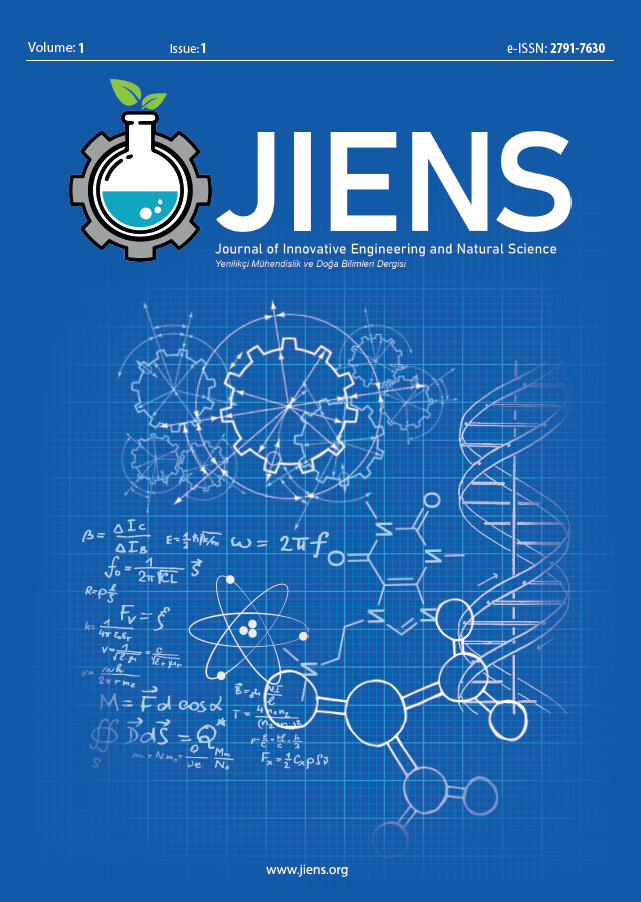Geçirgen ve viskoz sınırlar kullanılarak idealleştirilen sonsuz zemin ortamının beton ağırlık barajların dinamik davranışına etkisi
Author :
Abstract
|
Yapı ve yapının üzerinde inşa edildiği zeminin karşılıklı etkileşimi yapısal davranış üzerinde oldukça etkili olmaktadır. Baraj gibi sosyoekonomik açıdan önemli yapıların dinamik davranışlarının zemin özelliklerinden bağımsız olarak ele alınması kabul edilemez. Fakat, sonsuz zemin ortamının kompleks davranışının baraj gövdesinin yapısal davranışı gibi idealleştirilmesi pek kolay değildir. Bu nedenle sonsuz zemin ortamının malzeme davranışının yanında, sonsuzluk özelliklerinin de yapısal modellemelerde yansıtılabilmesi gerekmektedir. Yapı ve zemin etkileşimin beraber olarak dikkate alındığı sonlu eleman çözüm yöntemlerinde sonsuz zemin ortamının boyutu suni etkilerin ortaya çıkmasına sebep olmaktadır. Sınırlı zemin ortamında ortaya çıkan suni etkilerin yapısal davranışı etkilememesi için zemin ortamı için uygun boyut ve sınır şartının seçilmesi gerekmektedir. Bu çalışmada yapı-zemin etkileşim çalışmaları için önerilen viskoz ve geçirgen sınırların etkisi araştırılmaktadır. Sayısal uygulama için Sarıyar beton ağırlık barajı dikkate alınmıştır. Yapılan çalışma sonucunda baraj-zemin etkileşim çalışmalarında kullanılan viskoz ve geçirgen sınırların çözüm maliyetini azalttığı ve dinamik analizlerde daha pratik çözüm sağladığı ortaya konmuştur. |
Keywords
Abstract
|
The interaction between structure and soil on which the structure is built has a very effective effect on the structural behavior. It is unacceptable to consider the dynamic behavior of socioeconomically important structures such as dams independently of soil properties. However, the complex behavior of the infinite soil medium is not easy to idealize as the structural behavior of the dam. For this reason, in addition to the material properties of the infinite soil medium, the infinity feature should also be reflected in the structural modeling. In the finite element methods, where the interaction between the structure and the ground is taken into account, the size of the infinite soil medium causes artificial effects. Appropriate dimesions and boundary conditions should be selected for the soil domain so that artificial effects in the bounded soil domain do not affect the structural behavior. In this study, the effect of viscous and transmitting boundaries proposed for the soil-structure interaction studies was investigated. Sarıyar concrete gravity dam was taken into account for the numerical application. As a result of the study, it has been revealed that the viscous and transmitting boundaries used in dam-soil interaction studies reduce the solution cost and provide a more practical solution in dynamic analysis. |
Keywords
- [1] Aydınoğlu MN (1992) Development of analytical techniques in soil-structure interaction. NATO ASI
- [1] Aydınoğlu MN (1992) Development of analytical techniques in soil-structure interaction. NATO ASI Series-Developments in Dynamic Soil-Structure Interaction, 390:25-42.
- [2] Lysmer J, Kuhlemeyer RL (1969) Finite dynamic model for infinite media. J. Eng. Mech. Div, 95: 859-877. https://doi.org/10.1061/JMCEA3.0001144
- [3] Lysmer J (1970) Lumped mass method for Rayleigh waves. Bull. Seismol. Soc. Am. 60:89-104. https://doi.org/10.1785/BSSA0600010089
- [4] Smith WD (1974) Nonreflecting plane boundary for wave propagation problems. J. Comput. Phys. 15:492– 503. https://doi.org/10.1016/0021-9991(74)90075-8
- [5] Hwang RN, Lysmer J, Berger E (1975) Simplified three-dimensional soil-structure interaction study. Second ASCE Specialty Conference on Structural Design of Nuclear Plant Facilities 786-808.
- [6] Bettes P (1977) Infinite elements. Int. J. Numer. Methods Eng. 11:53-64. https://doi.org/10.1002/nme.1620110107
- [7] Clayton R, Engquist B (1977) Absorbing boundary conditions for acoustic and elastic wave equations. Bull. Seismol. Soc. Am. 67:1529-1540. https://doi.org/10.1785/BSSA0670061529
- [8] Dumanoğlu AA (1980) A method for the dynamic analysis of embedded structures. The Seventh World Conference on Earthquake Engineering, İstanbul, Turkey, 335-339.
- [9] Liao ZP, Wong HL (1984) A transmitting boundary for the numerical simulation of elastic wave propagation. Soil Dyn. and Earthquake Eng. 3:174-182. https://doi.org/10.1016/0261-7277(84)90033-0
- [10] Berenger JP (1994) A perfectly matched layer for the absorption of electromagnetic waves. J. Comput. Phys. 114:185-200.https://doi.org/10.1006/jcph.1994.1159
- [11] Chuhan Z, Xinfeng C, Guanglun W (1999) A coupling model of fe-be-ie-ibe for non-linear layered soil-structure interactions. Earthquake Eng. Struct. Dyn. 28:421-441. https://doi.org/10.1002/(SICI)1096- 9845(199904)28:4<421::AID-EQE824>3.0.CO;2-J
- [12] Wolf JP, Song C (2000). Finite-element modelling of unbounded media. John Wiley & Sons Ltd., Chichester
- [13] Park S, Antin N (2003) A discontinuous galerkin method for seismic soil-structure interaction analysis in the time domain. Earthquake Eng. Struct. Dyn. 33:285-293. https://doi.org/10.1002/eqe.353
- [14] Liu J, Gu Y, Wang Y, Li B (2006). Efficient procedure for seismic analysis of soil-structure interaction system, Tsinghua Science and Technology, 11:625-631. https://doi.org/10.1016/S1007-0214(06)70244-9
- [15] Du X, Zhang Y, Zhang B (2006). Nonlinear seismic response analysis of arch dam-foundation systems-part I dam-foundation rock interaction, Bull. Earthquake Eng. 5:105-119. DOI 10.1007/s10518-006-9012-3
- [16] Kucukcoban S, Kallivokas LF (2011). Mixed perfectly-matched-layers for direct transient analysis in 2Delastic heterogeneous media, Comput. Methods Appl. Mech. Engrg. 200:57–76. 10.1016/J.CMA.2010.07.013
- [17] Kucukcoban S, Kallivokas LF (2013). A symmetric hybrid formulation for transient wave simulations inPML-truncated heterogeneous media, Wave Motion 50:57-79. https://doi.org/10.1016/j.wavemoti.2012.06.004[18] Mazzotti M, Bartoli I, Marzani A, Viola E (2013). A coupled SAFE-2.5 D BEM approach for the dispersionanalysis of damped leaky guided waves in embedded waveguides of arbitrary cross-section, Ultrason. 53:1227- 1241. https://doi.org/10.1016/j.ultras.2013.03.003
- [19] Mazzotti M, Bartoli I, Marzani A (2014). Ultrasonic leaky guided waves in fluid-coupled genericwaveguides: hybrid finite-boundary element dispersion analysis and experimental validation, J Appl Phys. 115:143512. https://doi.org/10.1063/1.4870857
- [20] Poula MK, Zervab A (2019). Comparative evaluation of foundation modeling for SSI analyses using twodifferent ABC approaches: Applications to dams, Eng. Struct. 200:109725. https://doi.org/10.1016/j.engstruct.2019.109725
- [21] Hibbit, Karlsson, Sorensen (2007) ABAQUS/Standard Analysis User’s Manual, USA.
- [22] Zhang W, Seylabi EE, Taciroglu E (2019) An ABAQUS toolbox for soil-structure interaction analysis, Comput. Geotech. 114:103143. https://doi.org/10.1016/j.compgeo.2019.103143
- [23] Lysmer J, Udaka T, Tsai C, Seed HB (1975). FLUSH-A computer program for approximate 3-d analysisof soil-structure interaction problems, Report No. EERC 75-30, Earthquake Engineering Research Center, University of California, Berkeley, California.
- [24] ANSYS (2013) Swanson analysis system, Pennsylvania, USA
- [25] Waas G (1972) Linear two-dimensional analysis of soil dynamics problems in semi-infinite layered media, Dissertation, University of California
- [26] Sesli H (2013) Influence of soil boundary conditions on dynamic behavior of soil-structure interaction systems. Dissertation, Karadeniz Technical University
- [28] PEER (Pacific Earthquake Engineering Research Centre) (2021), http://peer.berkeley.edu/smcat/data, 15 December 2021.
